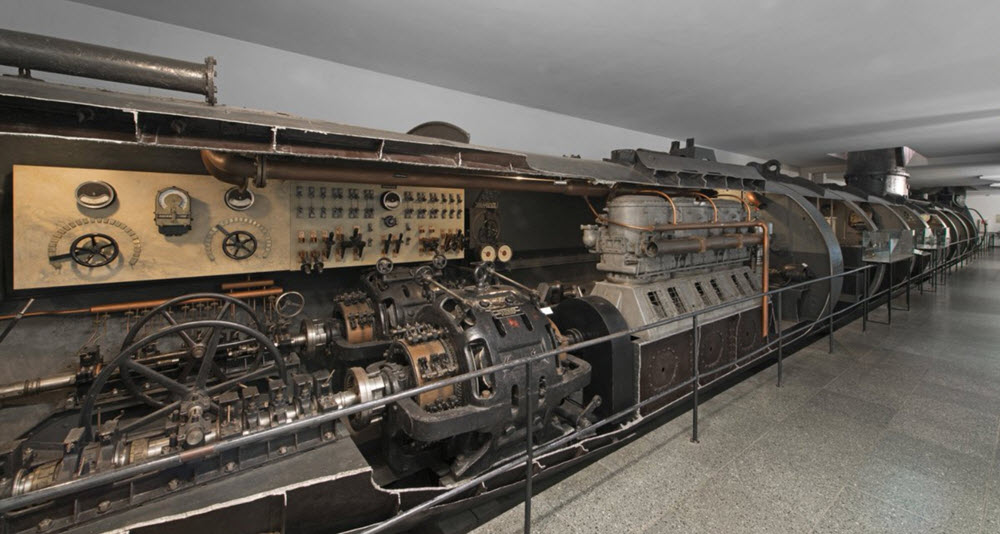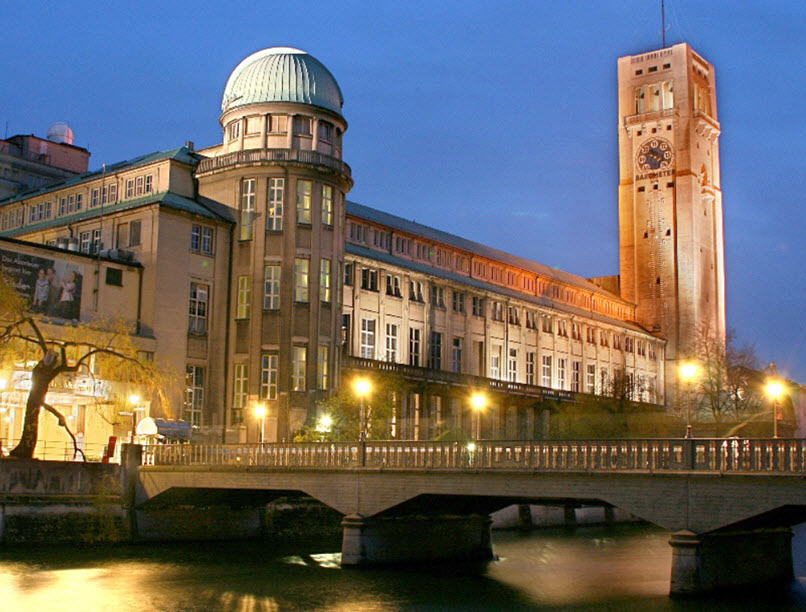Located in Munich, the German Museum of Masterpieces of Science and Technology (German: Deutsches Museum von Meisterwerken der Naturwissenschaft und Technik) houses roughly 28,000 objects from 50 fields of science and technology. In everyday speech, it is commonly referred to simply as Deutsches Museum – both in German and in English.
This is the world’s largest museum of science and technology, and it receives around 1.5 million visitors per year.
In the past, it was also utilized as a music venue, and famous artists such as Jimi Hendrix and Elton John have performed here.
Examples of permanent exhibits
| Environment
|
Music Paper Pharmacy
|
Where is the museum?
The museum building is found on a small island in the River Isar, which flows through Munich.
Address: Museumsinsel 1, 805 38 München
Coordinates: 48°07′48″N 11°35′00″E:
The site
Deutsches Museum is located on a small island named in the River Isar in Munich. For centuries, this island was used for rafting wood, and called Kohleninsel (Coal Island). Until the Sylvenstein Dam was built upstream, the island was flooded regularly.
In 1903, the city council donted the island to the Deutsches Museum and renamed it Museumsinsel.
Origins
After a meeting of the Association of German Engineers, the museum was founded on 28 June, 1903. A driving force was the electrical engineer Oskar von Miller, who had managed to collect 260,000 marks in donations from a small group of supporters who wanted to help fund a museum for science and technology.
As mentioned above, the city of Munich promtly donated a small island in city to the museum project. Also in 1903, Prince Ludwig agreed to act as the museum’s patron.
Even before the museum building was constructed, collections started to arrive from various sources, both within Germany and from abroad. The Bavarian Academy did for instance donate a lot of objects. Until the museum building could be created, these objects were exhibited in the National Museum.
The foundation stone for the Deutsches Museum building on the island was laid on 12 November, 1906.

The branches
In addition to the main museum on Museumsinsel, there are three branches:
- The Flugwerft Schleißheim branch outside Munich
This branch is located roughly 18 km north of the city centre, on the premises of Germany’s first military airbase. Among other things, the museum includes the old air control and command centre, and it displays various airplanes. There is for instance a Horten flying wing glider from the 1940s here, and several VTOL (vertical take off and landing) planes developed in the 1950s and 1960s. After the reunifiation of Germany, Russian-made planes were moved from East Germany to the museum.
- The Bonn branch
The Bonn branch was opened in 1995, and is focused specifically on German science and technology, especially from 1945 and onwards.
- Deutsches Museum Verkehrszentrum in Munich
This branch, which is located at Theresienhöhe in Munich, is focused on transporation technology.

